Valentine’s Day comes once a year on February 14. It’s a time to show someone how much you love and appreciate them, but how to say it? Flowers are one of the best gifts because flowers represent so many different aspects of love. From romantic love to BFF appreciation and secret admiration, here are the best flowers for Valentine’s Day.
1. Roses
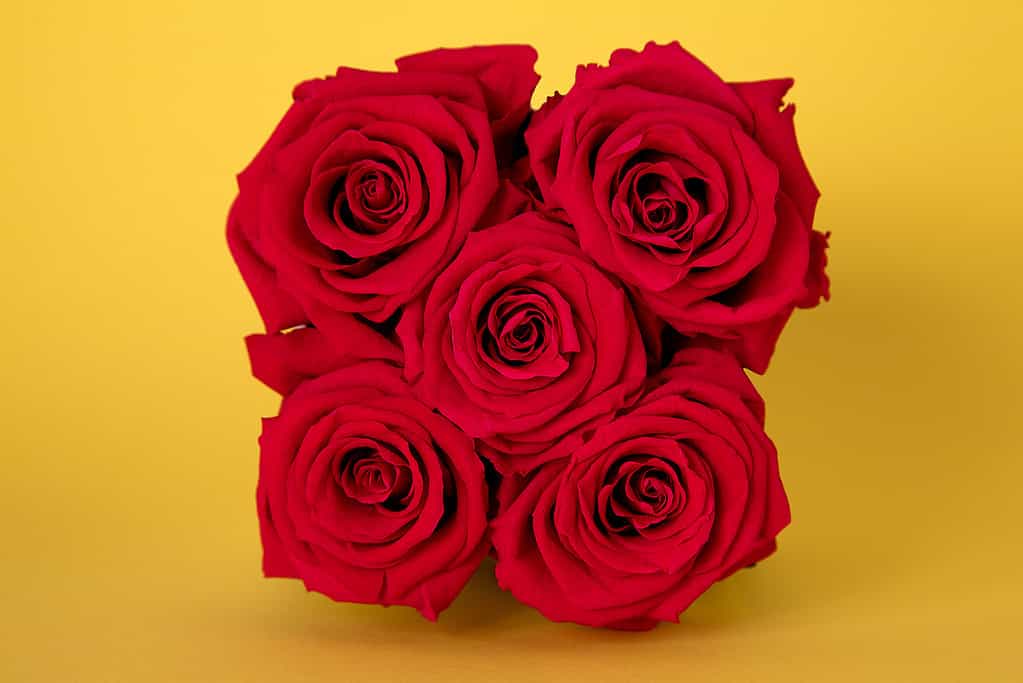
Red roses represent passionate love and desire.
©samaneh/Shutterstock.com
Roses are the obvious choice for Valentine’s Day. You won’t struggle to find roses for sale!
Beautiful roses symbolize love. In Ancient Rome, a red rose was a symbol of Venus, the goddess of love, so traditionally, red roses signify romantic love, passion, and desire. One or a dozen red roses are one of the best flowers for lovers and partners on Valentine’s Day.
But that’s not all.
White roses signify purity, loyalty, and innocence, and they represent the dawn of new love. Yellow and orange roses embody loyal friendship and gratitude.
And pink roses?
Pink roses illustrate appreciation and admiration. On Valentine’s Day, pink roses are a good choice for early-day relationships because they’re not as full-on as passionate red roses.
2. Tulips

Red tulips represent true love, whereas yellow tulips signify friendships.
©Sergey V Kalyakin/Shutterstock.com
In the Victorian love language, tulips represented true love. They’re often overlooked for modern-day roses, but tulips are very beautiful flowers available in a range of colors. Did you know they originally grew wild in central Asia but became so valuable in The Netherlands that a whole economy grew and collapsed around them?
Choose red or deep-coloured tulips for passion or yellow for friendships. White tulips signify forgiveness and fresh beginnings.
3. Orchid

Orchids are good for Valentine’s Day, especially if the recipient doesn’t like cut flowers.
©Kororirori/Shutterstock.com
An orchid is a modern choice for Valentine’s Day. In the Far East, orchids signify love, beauty, and strength, so it’s a thoughtful choice for lovers, friends, and moms.
An orchid plant can live for years (get plenty of light on its roots and don’t overwater it), making it an eco-friendly choice and one for folks who don’t like cut flowers.
4. Sunflower

Choose sunflowers for your BFF on Valentine’s Day.
©JAHF/Shutterstock.com
Another modern choice is the sunflower. A single stem, or bunch of sunflowers, is an up-to-date Valentine’s Day flower representing happiness and adoration. Gifting sunflowers on Valentine’s Day is a perfect choice for someone who’s been feeling low, unwell, or going through a difficult time.
And if you’re looking to create an impact, large sunflower heads are hard to miss!
5. Gypsophila
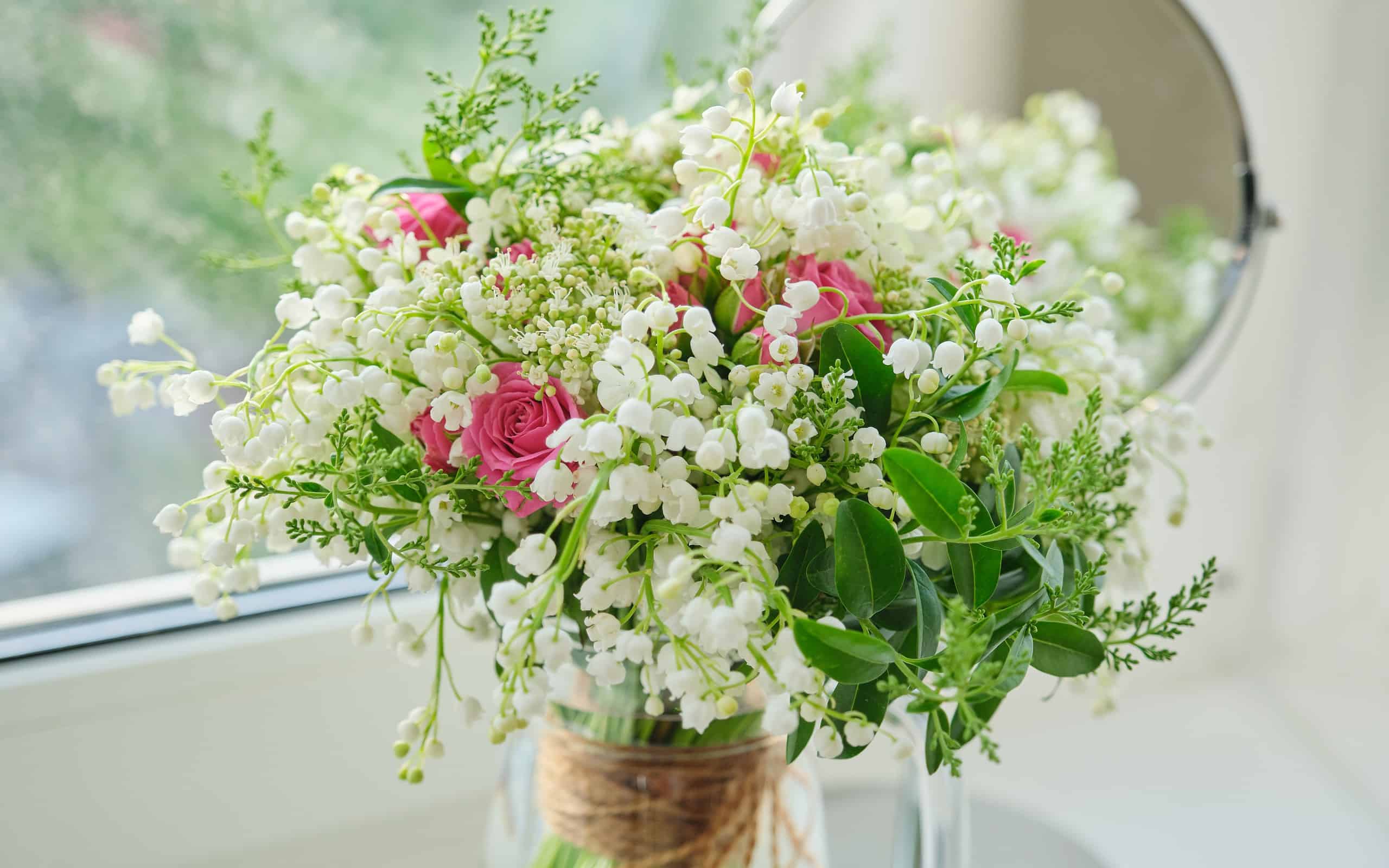
Gypsophila is also called Baby’s Breath. It represents eternal love.
©Valeriy_G/iStock via Getty Images
Fluffy white or pink gypsophila indicates eternal love; it’s highly popular in wedding bouquets, so it’s a dead cert for Valentine’s Day!
However, gypsophila is a small, fluffy flower that doesn’t always make an impact by itself. Unless you can source a large, healthy bouquet, this one is best paired with roses or tulips.
6. Chrysanthemum

Mums make the best choice for moms on Valentine’s Day.
©Helen Sushitskaya/Shutterstock.com
Chrysanthemums, known as “mums,” are one of the best flowers for Valentine’s Day – for your mom!
Mums are sold in most florists and general stores, too. Their beautiful big blooms are eye-catching, and there’s a huge range of sumptuous colors to pick from.
Mums originate from China, where they represent good luck and a long life. White, peach, yellow, and blue are best for your mom or a friend, whereas reds and pink best suit a romantic relationship.
7. Daisy
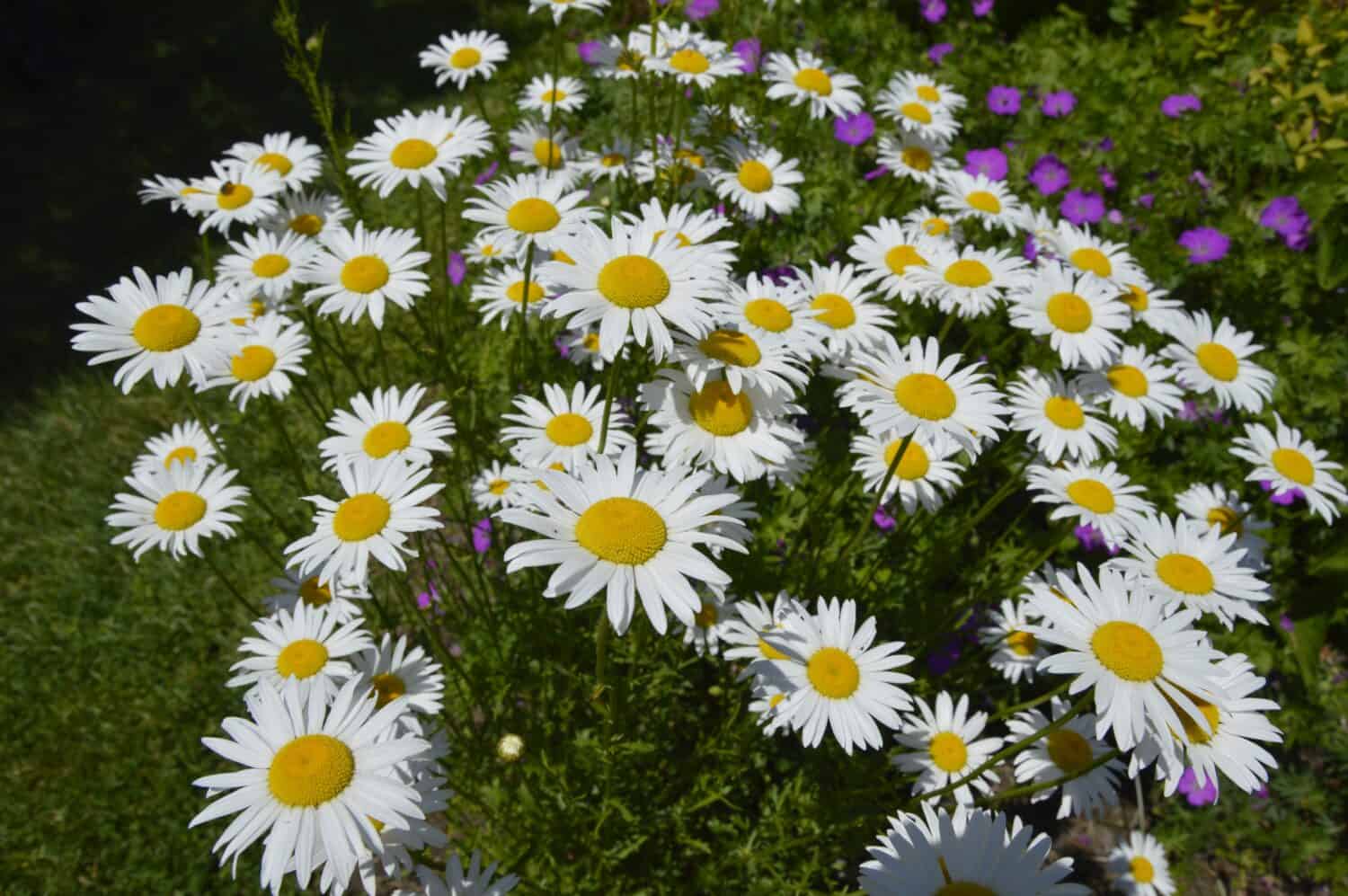
Pretty daisies signified keeping a secret in the Victorian era’s flower language.
©Heeji Choi/Shutterstock.com
A pretty daisy is a sweet choice for sweethearts on Valentine’s Day. Folks choose daisy arrangements for daughters, friends, and parents. In Ancient Greece, a daisy signified happiness, good fortune, and innocence. In the Victorian language of flowers, daisies also signify the ability to keep a secret.
8. Hydrangea

Long termers could choose hydrangeas for Valentine’s Day. They signify unity and love.
©unverdorben jr/Shutterstock.com
A popular Valentine’s flower is the hydrangea, but what does a hydrangea signify? Well, today in the Western world, this sumptuous bloom represents unity and love, so it’s a good pick for long-term relationships.
In Victorian times, hydrangeas represented boastfulness and vanity. In Japan, it’s remorse, and in Korea, hydrangeas signify resilience.
9. Peony

Create a massive impact with sumptuous peonies that signify beauty and honor.
©Snowbelle/Shutterstock.com
Peony is an unusual Valentine’s Day choice, but because it represents abundance, beauty, honor, and romance, it’s a top pick for pretty much anyone in your life.
A bunch of peonies is a real talking point and often a big surprise too, especially if you regularly gift roses or lilies. Their massive heads create an epic bunch of flowers that always look expensive.
10. Lily
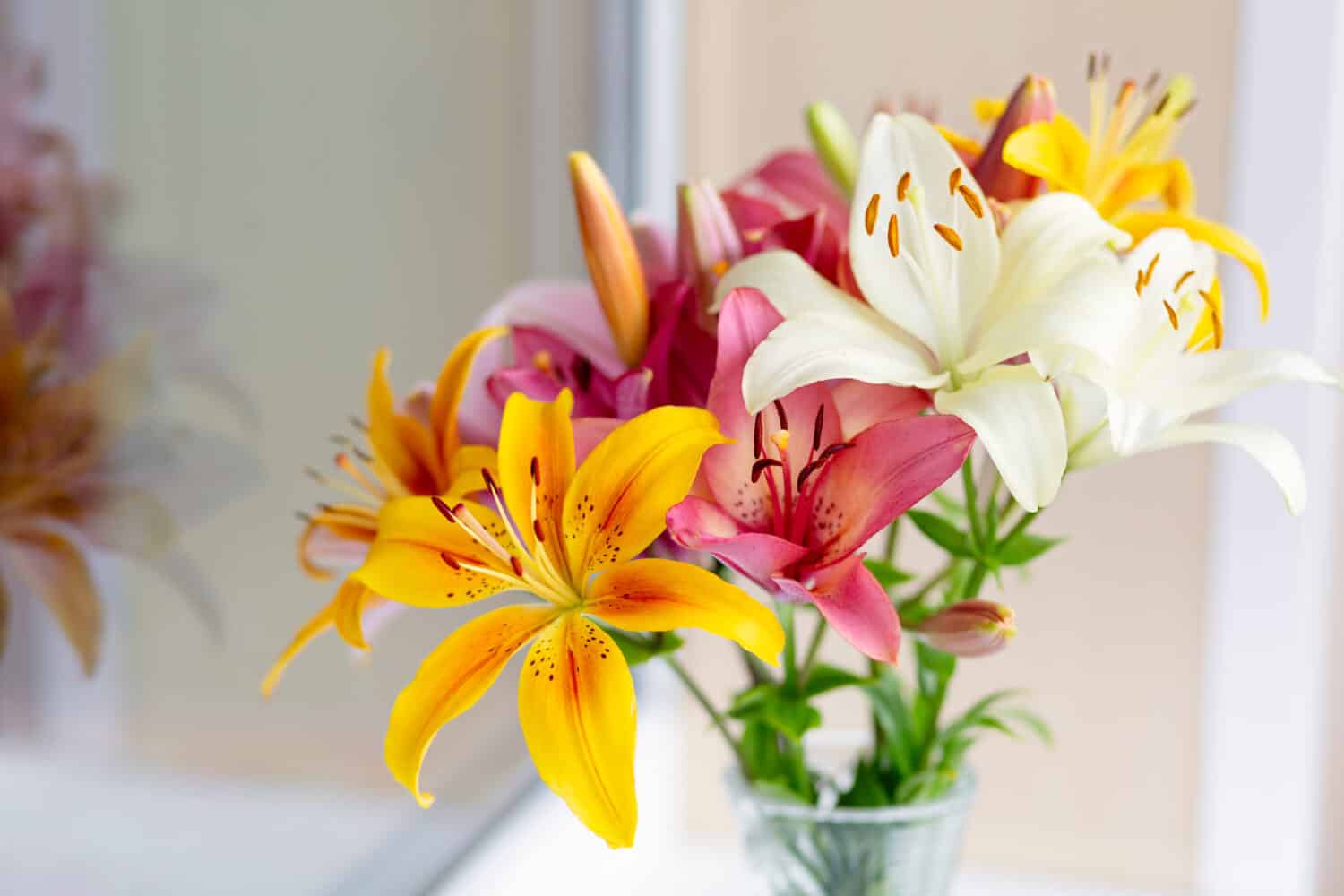
White lilies are associated with funerals, but many colors exist.
©NadinD/Shutterstock.com
Beautiful lilies create a really stunning bouquet, but be careful because some folks equate white lilies with death. Unless you’re 100% sure your recipient doesn’t think of lilies as funeral flowers, it’s best to avoid them on Valentine’s Day.
However, if you’re buying for a special someone you’ve lost, a bouquet of white lilies or a single lily is a heartfelt act of remembrance and love.
11. Eucalyptus
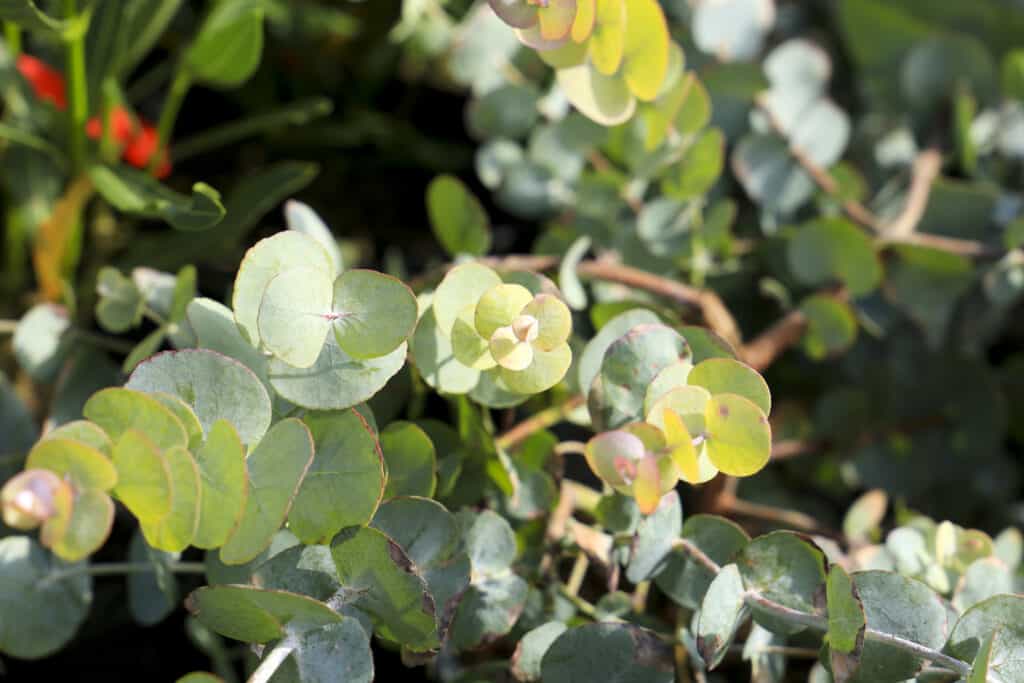
Modern eucalyptus is a good choice if flowers make your loved one sneeze.
©iStock.com/soniabonet
It symbolizes strength and protection, but eucalyptus isn’t the first bouquet that springs to mind for Valentine’s Day. However, it’s a modern take on a floral tribute with a divine scent that fills a home with fresh, clean smells.
Eucalyptus is native to Australia where aboriginal tribes burn it to purify bad energy. If your recipient isn’t into flowers, or flowers make them sneeze, then a eucalyptus bouquet is a contemporary alternative.
12. Carnation
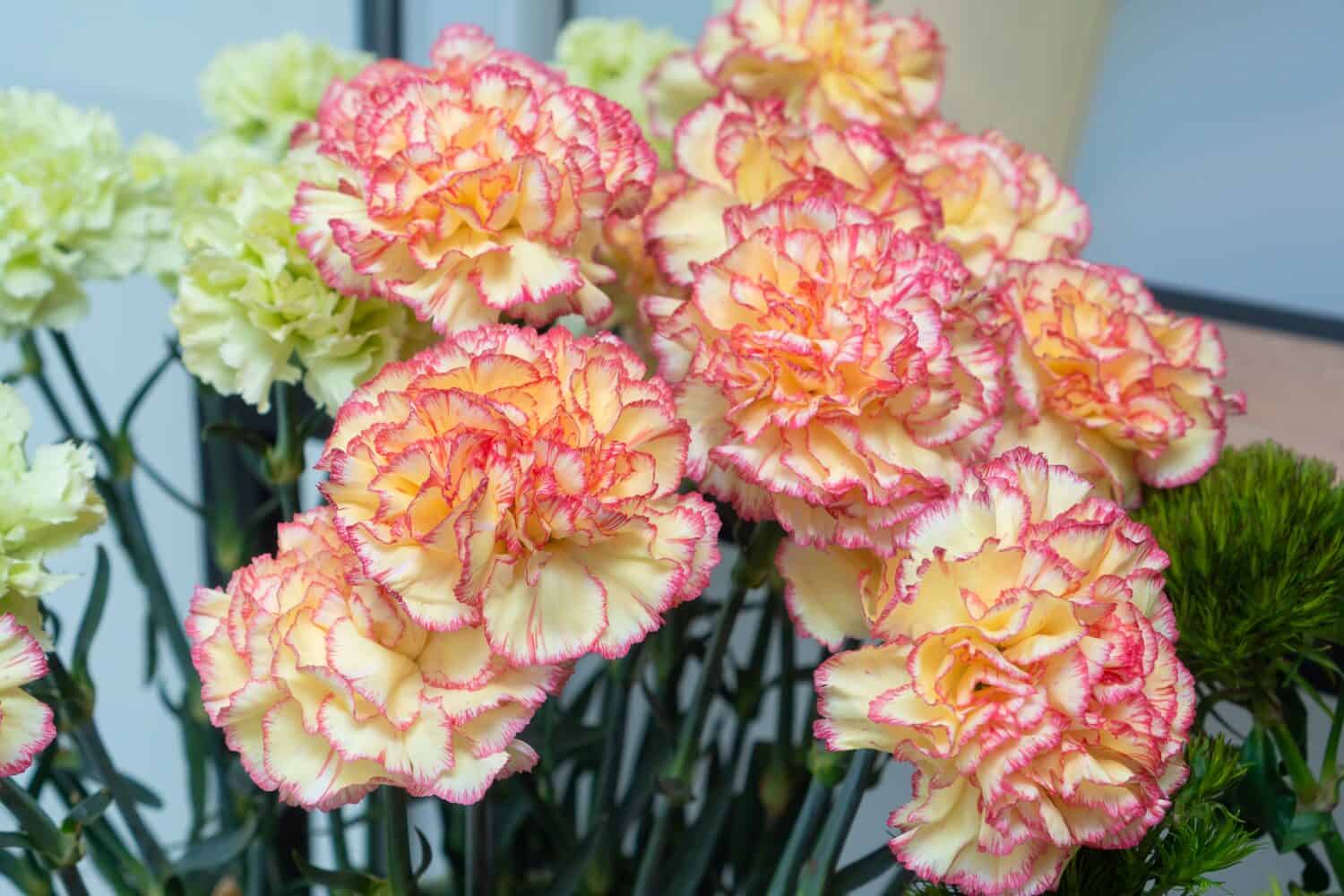
Pink carnations signify a mother’s undying love.
©ERIK Miheyeu/Shutterstock.com
Carnations fell out of fashion, in no small part due to their long-lived flowers surviving gas stations for days without water and being grabbed as a last-minute gift, but these exquisite blooms represent a mother’s undying love. Legend says carnations grew where the Virgin Mary’s tears fell.
The most common color available is pink, which is a great choice for moms, family members, and friends on Valentine’s Day. Just beware of yellow carnations, which traditionally represent rejection and disdain!
13. Stocks
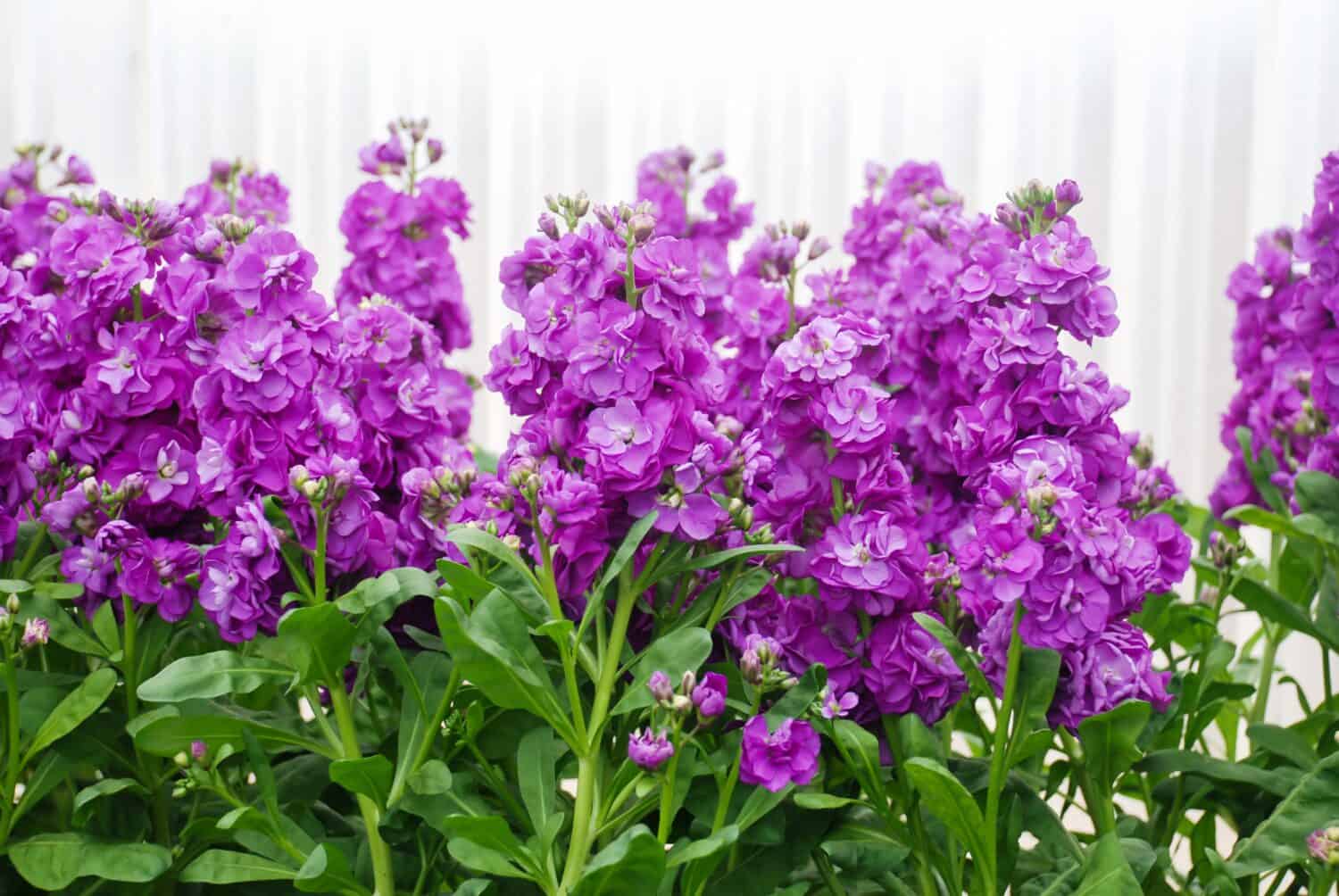
Stocks are native to Greece and the wider Mediterranean.
©Yui Yuize/Shutterstock.com
Sweetly scented stocks are the best flowers for Valentine’s Day if you’re in a long-term relationship. They embody a contented existence and a happy life.
These underappreciated blooms are native to the Mediterranean and Greece, where they bloom in pink, red, iliac, or white. Some folks call stocks gilly flowers or Virginia stocks, but whatever you name them, stocks won’t let you down on the 14th.
14. Gardenia

Gardenia flowers represent secret passionate love.
©nuttapong/iStock via Getty Images
Sending flowers to someone you admire but keeping it on the low? Choose gardenia, which signifies secret passionate love!
Gardenia flowers come in white or yellow, and their scent is a knockout. It’s not a traditional choice for sure, but the recipient won’t fail to fall in love – with the flowers, that is!
15. Freesia
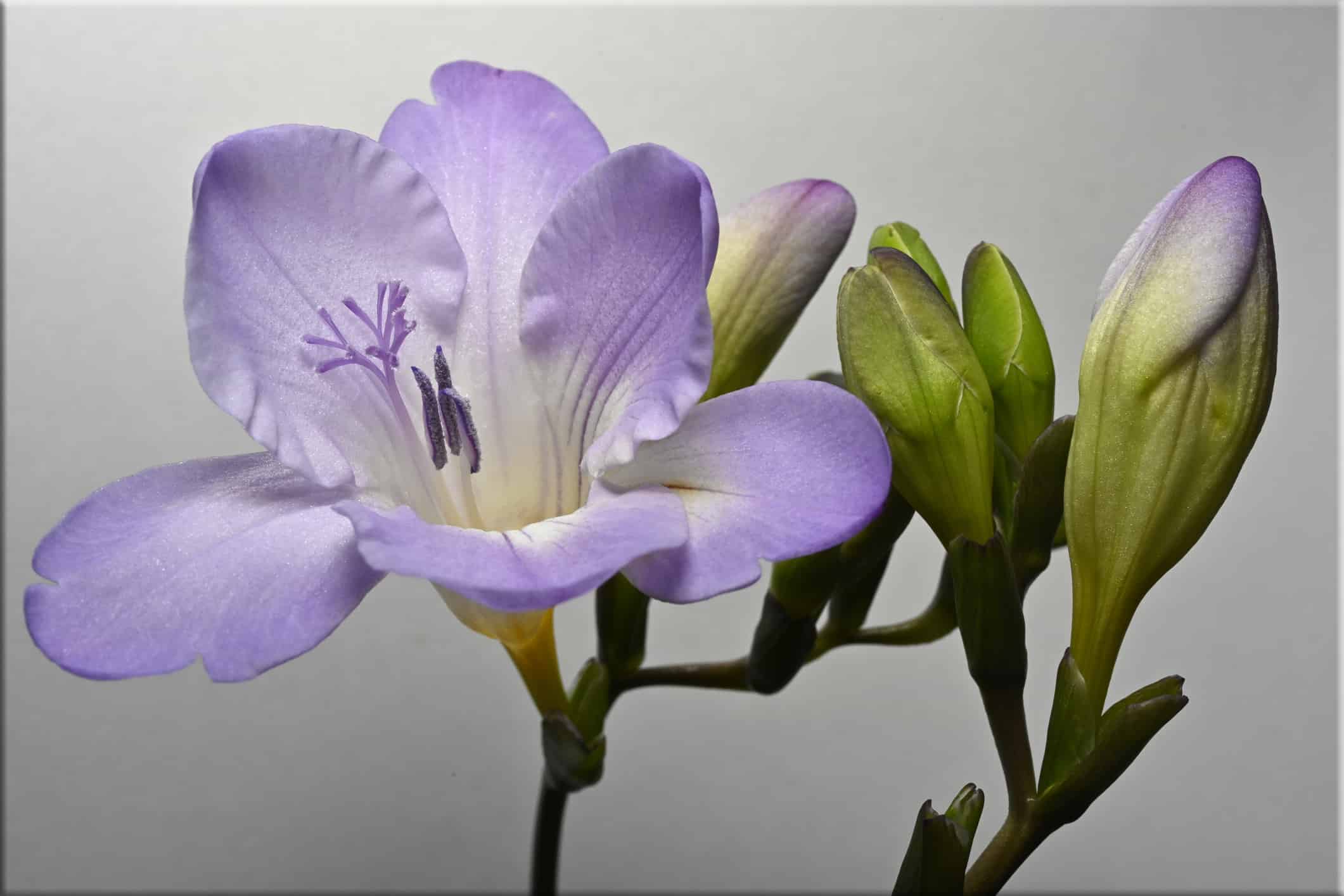
Freesia flowers embody trust and lasting friendship.
©iStock.com/Collinswood Images
Botanist Christian P. Ecklon discovered freesia for the Western world in 1866. He found this pretty flower in southern Africa and named it after his botanist friend, Dr. Friedrich Freese. Today, freesia symbolizes lasting friendship and trust.
The photo featured at the top of this post is © Iuliia Zavalishina/iStock via Getty Images
Thank you for reading! Have some feedback for us? Contact the AZ Animals editorial team.







